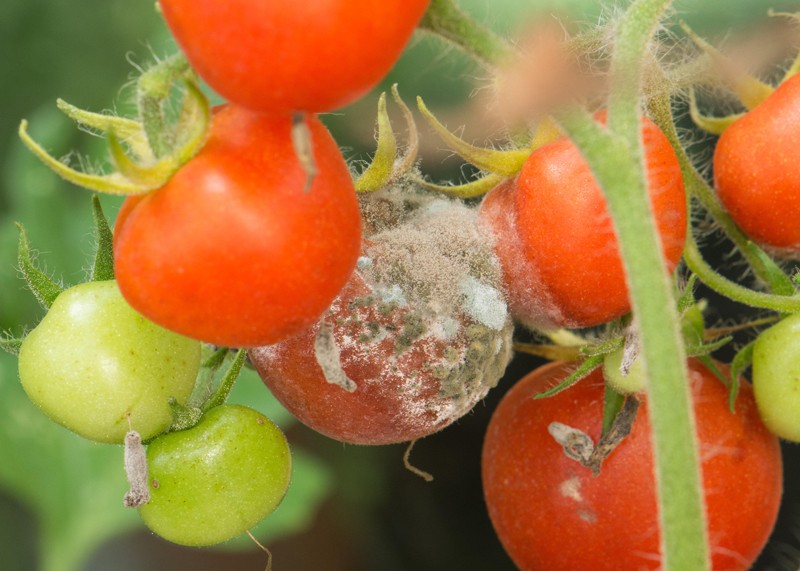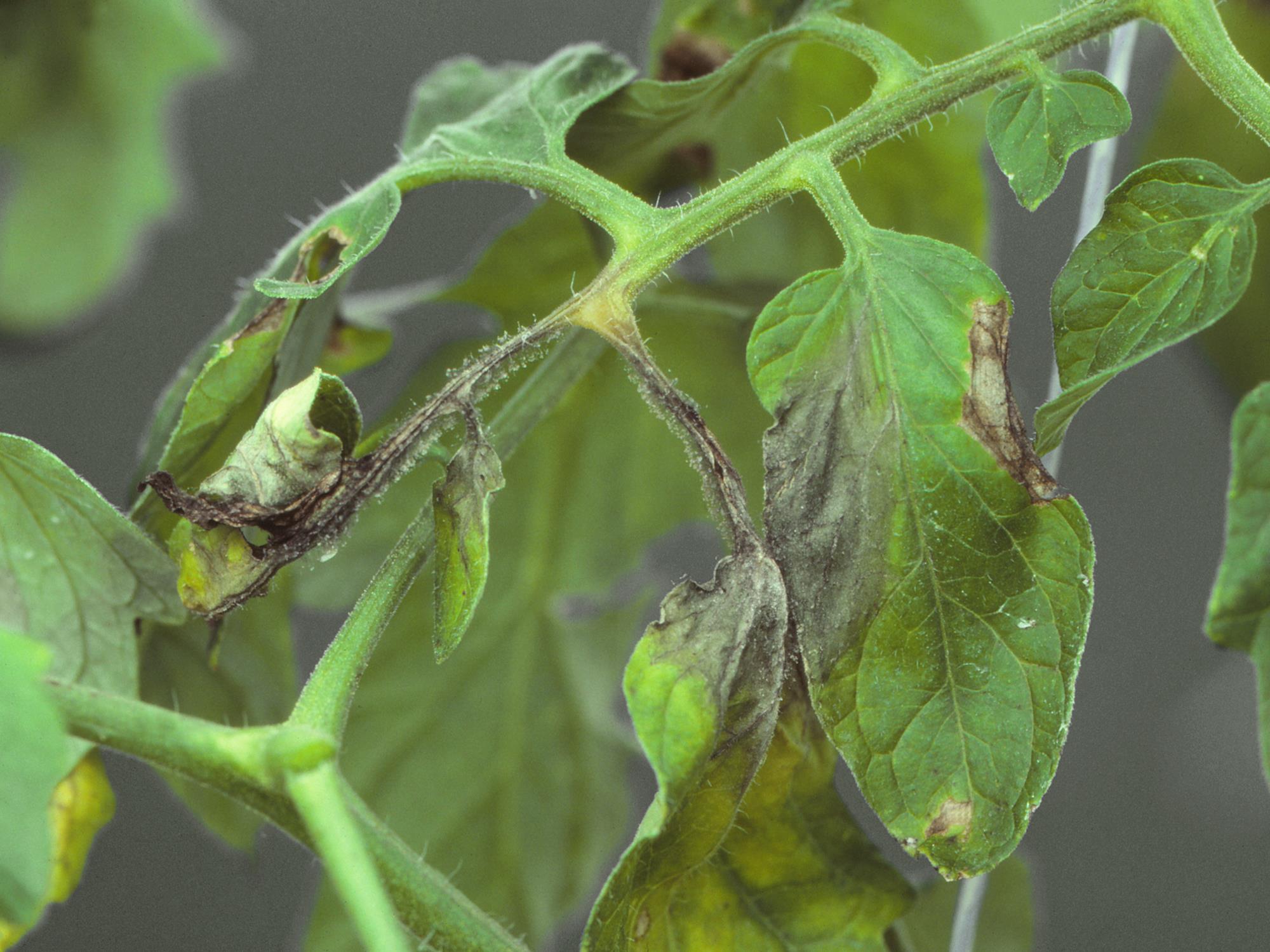
Podredumbre gris
WHAT IS AND HOW TO ELIMINATE
Gray Rot
Botrytis Cinerea
Pathogen:
Fungus
Type:
Risk to the plant:
HIGH



DESCRIPTION
WHO CAUSES IT?
The pathogen Botrytis cinerea, also known as gray mold, is a fungus that affects a wide variety of plants, including tomatoes. It is characterized by its ability to infect dead or living plant tissues, causing serious diseases in crops.
SYMPTOMS
In tomatoes, Botrytis cinerea produces a disease known as gray rot. Symptoms include brown or gray Taches on fruits, leaves and stems, as well as a grayish mold that may cover affected parts of the plant.




TEMPERATURE AND HUMIDITY
15°C - 25°C
90% - 100%

HOW IS IT SPREAD?
Air, direct contact with infected plant material and spread through contaminated growing tools.

HOW TO REMOVE IT?
Home remedies
There are no home treatments
Chemical treatments
• AZOXISTROBIN 25% [SC] P/V
• CAPTAN 47.5% [SC] P/V
• CAPTAIN 80% [WG] P/P
• CIPRODINIL 37.5% + FLUDIOXONIL 25% [WG] P/P
• DIFENOCONAZOLE 25% [EC] P/V
• EUGENOL 3.3% + GERANIOL 6.6% + THYMOL 6.6% [CS] P/V
• PHENHEXAMIDE 50% [SC] P/V
• FLUDIOXONIL 50% [WG] P/P
• FOLPET 50% [SC] P/V
• FOLPET 80% [WG] P/P
• POTASSIUM HYDROGEN CARBONATE 0.425% [AL] P/V
• POTASSIUM HYDROGEN CARBONATE 85% [SP] P/P
• IMAZALIL 2% [AE] P/P
• LAMINARIN 4.5% [SL] P/S
• MEPANIPIRIM 50% [WP] P/P
• COPPER OXYCHLORIDE 35% (EXPR. IN CU) [WG] P/P
• PENTIOPYRAD 20% [SC] P/V
• PIRACLOSTROBIN 6.7% + BOSCALIDE 26.7% ( ) [WG] P/P
• PYRIMETANIL 40% [SC] P/V
• TEBUCONAZOLE 20% [EW] P/V
• TEBUCONAZOLE 25% [EW] P/V
Authorized treatments in organic farming
• EUGENOL 3.3% + GERANIOL 6.6% + THYMOL 6.6% [CS] P/V
• POTASSIUM HYDROGEN CARBONATE 0.425% [AL] P/V
• POTASSIUM HYDROGEN CARBONATE 85% [SP] P/P
• LAMINARIN 4.5% [SL] P/S
• COPPER OXYCHLORIDE 35% (EXPR. IN CU) [WG] P/P
Insect allies
EFFECTIVE PRODUCTS TO ELIMINATE THIS PEST
Sponsored link
Sponsored link
Sponsored link
Sponsored link
Sponsored link
Sponsored link
Effective against all types of fungi
To prevent and control the disease caused by Botrytis cinerea in tomato crops, it is important to implement integrated pest management practices, such as the removal of infected plant remains, adequate ventilation in greenhouses, the use of preventive fungicides and the control of irrigation to avoid excess humidity.






















